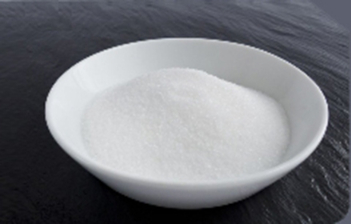Short answer: No. They are related, but they are not the same. Phosphorus is an element. Phosphate is a group of compounds that contain phosphorus and oxygen (the ion PO₄³⁻).
1. What Is Phosphorus?
Phosphorus (P) is an element. Its atomic number is 15. It sits in Group 15 of the periodic table. Phosphorus appears in several forms. Common ones are white, red and black phosphorus. White phosphorus reacts quickly with air. It can ignite. So you rarely find pure phosphorus in nature. It usually occurs combined with oxygen or other elements.
Quick facts:
- Symbol: P
- Atomic number: 15
- Common oxidation states: +3, +5 (and some others in specific compounds)
- Uses: chemicals, specialty materials, some industrial processes
2. What Is Phosphate?
Phosphate is an ion or a salt. The basic phosphate ion is PO₄³⁻. It carries a negative charge. It bonds with metals like calcium, sodium, or potassium. That gives salts such as calcium phosphate or sodium phosphate. In water and biology, you often see related forms: H₂PO₄⁻ and HPO₄²⁻. Those come from phosphoric acid losing protons step by step.
Types you commonly meet:
- Orthophosphate: PO₄³⁻
- Dihydrogen phosphate: H₂PO₄⁻
- Hydrogen phosphate: HPO₄²⁻
- Polyphosphates: chains or rings of PO₃ units
Phosphate is stable in water. It moves through soils, plants, animals, and water systems.
3. The Chemical Link Between Them
When elemental phosphorus reacts with oxygen, it forms phosphorus oxides (for example P₄O₁₀). Add water and you form phosphoric acid (H₃PO₄). That acid can lose hydrogen ions and produce phosphate ions. The steps go in sequence, from H₃PO₄ to H₂PO₄⁻, to HPO₄²⁻, to PO₄³⁻. In short: phosphorus → oxide → acid → phosphate. That path explains why you find phosphate widely in nature, but seldom pure phosphorus.
4. Why People Mix Them Up
Both names contain the same root: “phosphor-”. That causes confusion. But one is an element; the other is a compound or ion. A simple analogy: think of iron and rust. Iron is the element. Rust is the oxidized form. Related, but not identical.
5. Where Each Appears
In living things. Organisms use phosphorus almost always as phosphate. DNA, RNA and ATP all include phosphate groups. Bones and teeth store phosphate as calcium phosphate.
In agriculture. Fertilizers supply phosphate salts. Farmers add MAP, DAP or TSP to soil. Plants then absorb phosphate ions.
In water systems. Excess phosphate from runoff fuels algae growth. That can reduce oxygen and harm aquatic life. This process is eutrophication.
6. Element vs Ion — a Comparison
- Phosphorus = element, neutral atom or allotrope, reactive.
- Phosphate = ion or salt, negatively charged, more stable in natural settings.
Biology, farming, and most environmental issues revolve around phosphate, not elemental phosphorus.
7. Phosphate in Biology
Cells use phosphate for many tasks. Phosphate forms part of the backbone of DNA and RNA. ATP uses phosphate groups to store and transfer energy. Phospholipids use phosphate in cell membranes. Phosphate also helps buffer body fluids (via H₂PO₄⁻ / HPO₄²⁻ equilibrium). Bones contain calcium phosphate. Without phosphate, many life processes would stop.
8. Industrial and Agricultural Uses
Industries use phosphate salts widely. They appear in fertilizers, water treatment chemicals, detergents (in places where regulations allow), and food additives. Elemental phosphorus has niche uses too. It appears in some chemical syntheses, matches historically, and specific industrial applications. But you will not feed elemental phosphorus to plants or animals. It is reactive and hazardous.
9. Environmental Impact
Phosphate is essential. But too much causes problems. Runoff from farms, lawns, or wastewater can raise phosphate levels in rivers and lakes. Algae grow fast on that extra nutrient. When algae die and decay, oxygen drops. Fish and other organisms can die. This chain is called eutrophication. Efforts to control phosphate inputs help protect water quality. Reclaiming phosphorus from waste streams also grows in interest.
10. Organic vs Inorganic Phosphates
Organic phosphates attach the phosphate group to carbon. Examples include ATP, DNA and many metabolites. Inorganic phosphates occur as free ions or simple salts in water and soil. Cells convert between organic and inorganic phosphates as part of metabolism.
11. The Phosphorus Cycle (Short)
Rocks containing phosphate weather. Weathering releases phosphate into the soil. Plants absorb some. Animals eat the plants. Decomposition returns phosphate to soil. Some phosphate washes into water and sediments. Because phosphorus has no gaseous phase in normal conditions, the cycle is slower than carbon or nitrogen cycles.
12. Common Misunderstandings
- “Phosphorus and phosphate are the same.” Wrong. One is the element. The other is the ion or its salts.
- “Fertilizers contain elemental phosphorus.” Wrong. Fertilizers contain phosphate salts.
- “All phosphate is harmful.” Not true. Phosphate is essential in small amounts. Excess causes harm mainly in ecosystems.
13. Final Summary
Phosphorus and phosphate are linked. But they are not the same. Phosphorus = element. Reactive and rarely free in nature. Phosphate = ionic form used by organisms and industry. Stable in water and soils. When you discuss nutrition, farming, or water quality, you should mean phosphate, not elemental phosphorus. Manage phosphate use. That helps crops and protects ecosystems.

